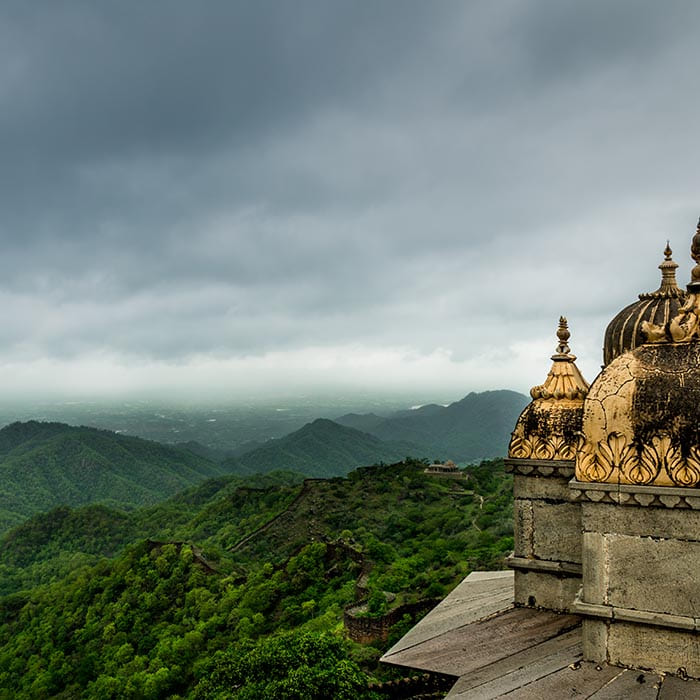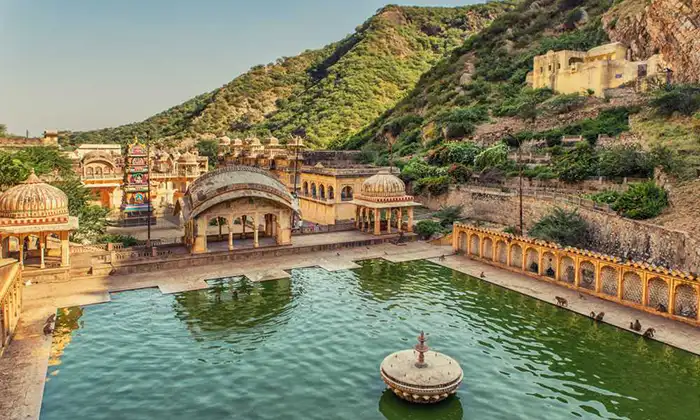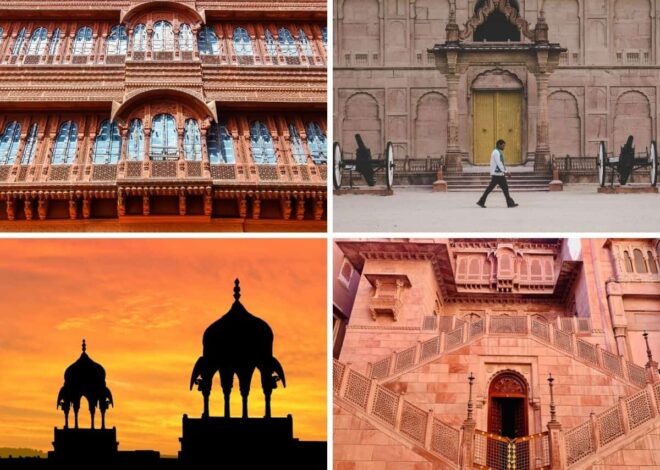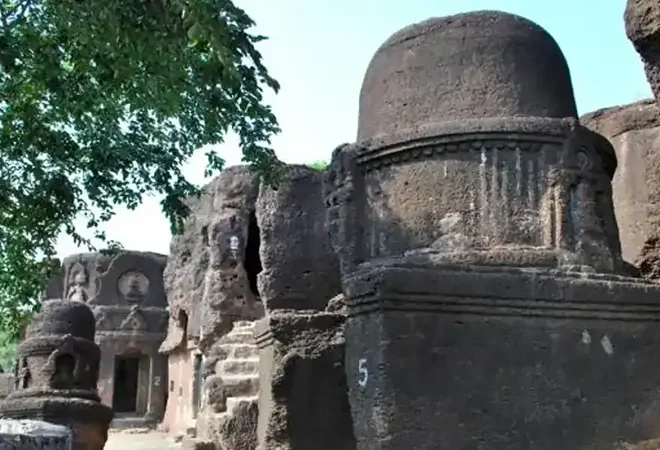
Kumbhalgarh Wildlife Sanctuary: A Sanctuary of Nature’s Treasures
The beautiful Kumbhalgarh Wildlife Sanctuary is located in Rajasthan, India, in the Rajsamand District, within the untamed environment of the Aravalli Range. This sanctuary, which covers a huge area of over 578 square kilometres, is a home for a variety of flora and fauna, making it a haven for nature lovers, wildlife photographers, and explorers alike. Kumbhalgarh Wildlife Sanctuary is a location that effortlessly integrates nature and culture, giving tourists an amazing experience. It has a rich history, stunning scenery, and a unique biodiversity.
Historical Roots
The sanctuary is named after the magnificent Kumbhalgarh Fort, which bears witness to the region’s rich past. The fort was built in the 15th century by the legendary ruler Rana Kumbha and is historically and architecturally significant. The Kumbhalgarh Fort, which stands 1,914 metres above sea level, provides amazing panoramic views of the surrounding region. What makes this fort particularly amazing is its surrounding wall, which stretches for an incredible 36 kilometres, second only in length to the Great Wall of China. The wall not only protected the fort, but it also performed an important role in protecting the region’s fauna and ecosystems.
Ecological Diversity
Kumbhalgarh Wildlife Sanctuary has a vast range of ecosystems, ranging from dry deciduous forests to rocky terrain, which provides home for a wide variety of plant and animal species. The sanctuary’s various heights provide a mosaic of ecosystems, allowing an incredible assortment of flora and fauna to cohabit.
Flora
The plant life at the sanctuary is as fascinating as it is diverse. The environment is dominated by dry deciduous woods with a canopy of trees such as teak, flame of the forest, banyan, and neem. These trees provide important supplies as well as shelter to the sanctuary’s diverse fauna.
Aside from the towering trees, the area is graced with a variety of plants, bushes, and grasses, all of which contribute to the delicate balance of the ecosystem. These plants have critical functions in soil conservation, water retention, and food provision for the sanctuary’s animals.
Fauna
The Kumbhalgarh Wildlife Sanctuary is well-known for its incredible wildlife diversity. Several species of mammals, birds, reptiles, and invertebrates call the refuge home. Among the most noteworthy residents are:
1. Leopard (Panthera pardus): The elusive leopard, at the top of the food chain, is one of the most sought-after sightings at the sanctuary. Spotting a leopard in its native habitat is a genuinely thrilling experience due to its incredible stealth and agility.
2. Sloth Bear (Melursus ursinus): The sloth bear is another charismatic member of the refuge, distinguished by its shaggy coat and unique nose. The sanctuary provides an ideal environment for these intriguing creatures, and visitors who are lucky enough to see them rummaging for termites or fruits may get a peek of them.
3. Jungle Cat (Felis chaus): The jungle cat, with its characteristic striped fur, thrives in the sanctuary’s meadows and woodland areas. These expert hunters are frequently sighted moving discreetly through the vegetation.
4. Indian Wolf (Canis lupus pallipes): The Indian wolf is one of the sanctuary’s uncommon and endangered animals. The Indian wolf, with its slender, lanky appearance, is a stunning sight when seen exploring the harsh countryside.
5. Hyena (Hyaena hyaena): The hyena is a scavenger recognised for its cunning and intellect, with unmistakable calls that resonate through the night. Although they may not be at the top of the visitor’s wish list, they play an important function in the environment.
6. Chinkara (Gazella bennettii): The chinkara, also known as the Indian gazelle, is a graceful and agile animal that jumps through the grasslands.
7. Sambar Deer (Rusa unicolor): The sanctuary is home to a significant population of sambar deer, India’s largest deer species. They contribute to the sanctuary’s attractiveness with their enormous antlers and majestic demeanour.
8. The blue bull, or nilgai (Boselaphus tragocamelus), is one of Asia’s largest antelope species. It is a common sighting within the sanctuary, because to its distinctive bluish-gray coat and strong structure.
Avian Diversity
With over 200 kinds of avian occupants, Kumbhalgarh Wildlife Sanctuary is also a birdwatcher’s paradise. The sanctuary is a colourful and musical haven for winged species, with vivid peafowls showcasing their stunning plumage and graceful parakeets flitting among the trees.
Other avian species that can be seen here throughout the winter months include eagles, vultures, owls, bee-eaters, kingfishers, and a variety of migratory birds. The sanctuary’s diversified habitats provide a perfect environment for avian nesting, foraging, and breeding.
Conservation Initiatives
The Rajasthan Forest Department and many conservation organisations collaborate to protect Kumbhalgarh Wildlife Sanctuary and its people. The sanctuary has been recognised for its ecological significance and is protected under India’s Wildlife Protection Act of 1972.
The management of the wildlife sanctuary is focused on conserving natural balance, ensuring sustainable tourism practises, and encouraging eco-friendly projects. These initiatives are critical to preserving the sanctuary’s delicate biological balance.
Tourism and Responsible Travel
Kumbhalgarh animals Sanctuary provides tourists with a once-in-a-lifetime opportunity to reconnect with nature and see animals in its natural habitat. However, in order to maintain the preservation of this unique habitat, travellers must practise safe travel.
1. Wildlife Respect: The wildlife in the sanctuary is vulnerable, therefore keep a safe distance and avoid upsetting the animals. The greatest approach to appreciate their beauty is to observe them silently and without making any disruption.
2. No Littering: Visitors should take their trash with them and dispose of it properly. Litter can harm wildlife and detract from the sanctuary’s natural beauty.
3. Adhere to Guided Tours: Hiring professional guides for safaris and excursions ensures that guests abide by the government’ norms and regulations. It also increases the likelihood of detecting wildlife and comprehending their behaviour.
4. Support Local people: By supporting local businesses and artists, tourists can help to improve the economic well-being of the people that surround the sanctuary, making them more invested in its conservation.
5. Use Eco-Friendly goods: Use biodegradable and eco-friendly goods during your vacation to reduce your environmental effect.
Conclusion
Kumbhalgarh Wildlife Sanctuary is a tribute to nature’s wonders, where history and wildlife collide to produce a one-of-a-kind and mesmerising experience. The sanctuary reflects the essence of Rajasthan’s cultural and natural legacy with its rich flora and fauna, magnificent vistas, and historical wonders. The benefit of entering this sanctuary, however, comes with the responsibility of protecting and preserving its sensitive ecosystem. We can protect the Kumbhalgarh Wildlife Sanctuary by practising responsible tourism and respecting the wildlife and local inhabitants.


